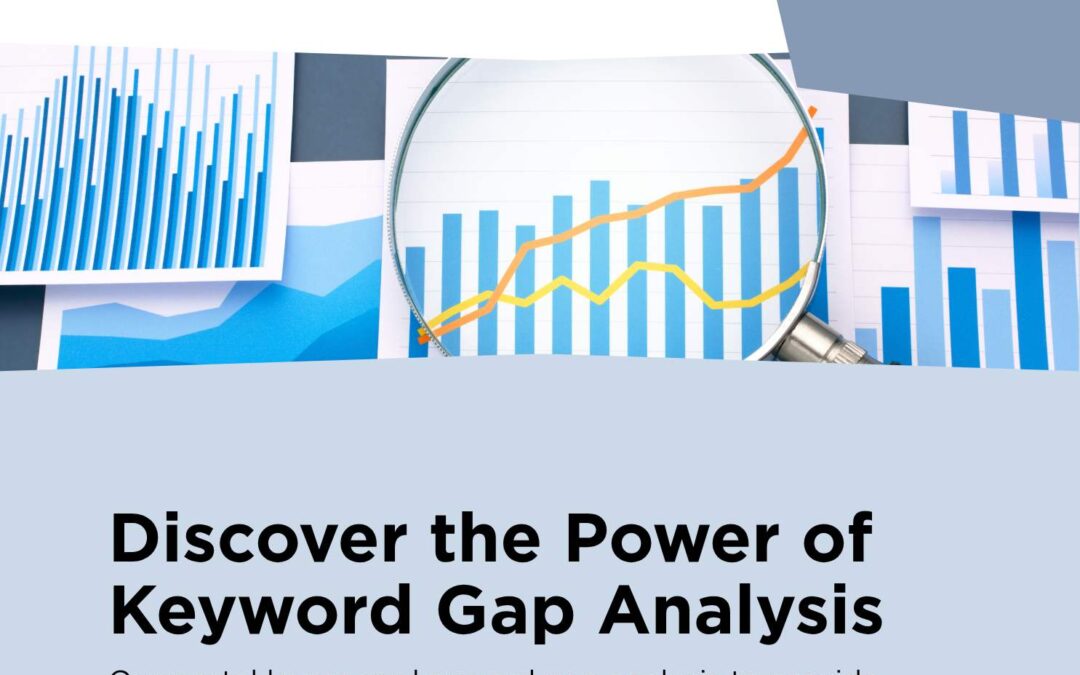A financial insights portal increased organic reach by applying keyword gap analysis to identify missing topics, enhance content targeting, and improve rankings.
This piece shows how the portal used data to spot what its audience was missing, shape its content plan, and boost engagement across different finance niches.
Identifying Untapped Topics Drives New Article Development
Keyword gap analysis started with a simple question: What are competitors ranking for that we’re not? The portal’s SEO team used competitive research tools to audit performance—stacking up thousands of ranking keywords against what competitors were using.
They spotted evident wins: trending finance subjects and long-tail terms lacking in their content collection. For example:
- “Green bond ETFs performance”
- “Corporate debt restructuring process”
- “Fintech lending compliance updates”
Rather than chasing every missing term, the team ranked these topics by potential impact—looking at monthly search volume, keyword difficulty, and audience intent.
Following the identification of key keywords, the editorial team developed articles that addressed both subject matter and search engine structure.
Every piece incorporated:
- Keyword-focused headlines,
- Clear subheadings with related queries, and
- Real financial data or case examples to build authority.
All this was designed to help the content rank faster because it filled specific gaps competitors had already validated with their own traffic.
Competitor Keyword Mapping Highlights Content Opportunities
The team then created a competitor keyword map—a spreadsheet showing:
- Exclusive competitor keywords (high-volume terms only rivals rank for)
- Shared keywords with higher competitor rankings
- Overlapping topics where the portal could expand coverage depth
For example, while both the portal and a rival covered “retirement planning for expats,” the competitor ranked higher due to having more subtopics such as “tax treaties” and “currency risk.” This identified a direct opportunity to build out those missing segments.
Competitor mapping also revealed low-competition niches. Phrases like “corporate ESG reporting frameworks” had modest volume but very few quality pages ranking. These became quick-win content projects.
Understanding search intent was crucial. The portal classified keywords into informational (research), navigational (specific brand/tool), and transactional (ready to buy). Articles were shaped to fit, lifting engagement and conversion rates.
Strategic Keyword Targeting Boosts Organic Traffic and Engagement
With the mapping done, the portal then moved to focus their efforts on keyword targeting, meaning assigning one primary keyword and several secondary ones to each page. This thus helps to avoid overlap that might cause cannibalization.
Moving beyond general “investment strategies,” an article could target a primary keyword such as “Sustainable investment strategies 2025,” supported by secondary terms like “ethical investing tips” and “green portfolio diversification.”
The approach not only demonstrated topical authority to Google but also perfectly matched how niche investors look for information.
In just 90 days, results included: a +28% CTR from search for new target pages, longer session durations, and more returning organic visitors.
By aligning content precisely with search queries, the portal not only grew impressions but also fostered stronger reader loyalty.
Content Refreshes Fill Gaps and Improve Search Rankings
The portal didn’t stop at new content. The team revisited their older, already published articles and, through using keyword gap insights, they added missing search terms, along with the addition of current relevant data.
A 2019 article on “Crypto Asset Regulation” had been sliding in rankings. As part of the refresh, they added new sections covering 2024–2025 regulation changes, slipped in competitor-found keywords like “crypto compliance frameworks,” updated all the stats and links with trusted sources, and gave the title a makeover to make it more click-worthy in search.
Two months post-refresh, the page moved from page three to Google’s first page, increasing traffic by 210%.
Repeatedly applying this update method created a library of optimized content that performed consistently without the cost of creating entirely new pages.
Data-Driven SEO Decisions Enhance Audience Growth Across Verticals
Keyword gap analysis was merged with web analytics to guide SEO investments. This combined dataset told the team which content verticals—personal finance, corporate investments, fintech—had the best ROI for keyword expansion.
When personal finance showed the highest growth response to optimization efforts, resources shifted toward that area. Fintech saw slower gains, so the team prioritized long-term topic building there.
To refine tough, competitive niches, the portal collaborated with specialists like Sandeep Mehta SEO for financial keyword gap analysis and content expansion strategies. This external input helped clarify technical on-page adjustments, improve keyword clustering, and address site architecture issues that were holding content back.
By combining the team’s in‑house editorial know‑how with focused external SEO support, the portal was able to grow and keep rankings moving upward.
Key Takeaways from the Case
SEO growth happened step-by-step: identifying proven keyword gaps, mapping the competitive field clearly, targeting each page with one primary plus supporting keywords, updating old pages using fresh gap info, and following the data to decide the next focus.
This case makes it clear — keyword gap analysis isn’t a “check it once and move on” task. It’s something you keep doing to stay ahead as searches change.
From Missed Opportunities to Market Presence: The Power of Targeted SEO
The Financial Insights Portal turned scattered SEO wins into a clear growth strategy by using keyword gap analysis in a structured way. It spotted topic gaps, mapped them against competitors, aligned content to specific search terms, and refreshed older articles with precision — steadily expanding its reach and becoming a regular player in competitive financial searches.
For finance publishers facing intense competition, this is a model worth replicating—because search visibility is rarely about producing the most content. It’s about producing the right content, aimed at the right audience, and keeping it updated as the industry changes.
Frequently Asked Questions (FAQs)
1. What is keyword gap analysis in simple terms?
It’s checking your keywords against your rivals’ to find terms you’re missing.
2. How often should it be done?
Quarterly works well, but faster markets like finance may require updates every 6–8 weeks.
3. What’s the difference between a keyword gap and low rankings?
A gap is a keyword you’re not ranking for at all; low ranking means you have coverage but need optimization.
4. Can smaller sites use this strategy effectively?
Yes. In fact, keyword gap analysis helps smaller publishers focus on realistic, high-return opportunities instead of competing directly on huge terms.






